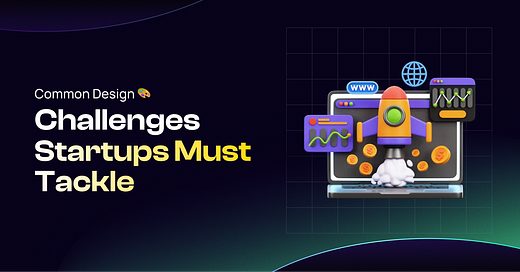Common Design Challenges Startups Must Tackle for Success
Starting a business is both exhilarating and challenging. At this critical time, startups face a lot of challenges, and they are more or less common in all cases. Among them, design is one that they sometimes overlook with almost no priority.
Good design can set a startup apart. It can enhance the credibility and engagement of the business. However, achieving effective design with limited resources is a common struggle. But with Future proof design strategy for startups can evade this situation.
Let's learn about the common design challenges startups face:
Limited Resources
In most cases, startups operate on tight budgets and lean teams. For this reason, they often face resource limitations that make it hard to deliver high-quality design. This issue can result in prioritizing quantity over quality. You know, the result of this approach is very dangerous. It will cause a shortage of user expectations.
So, what to do? Follow these tricks:
Focus on essential tasks like user research and key feature design.
Maximize resources by using affordable design tools.
Outsourcing specific tasks to experienced freelancers or agencies.
Undefined Brand Identity
Creating a cohesive brand identity can be challenging for new startups. Still, it's essential to define their values and audience. Without a clear identity, startups may end up with inconsistent branding. It can confuse potential customers.
To prevent this problem, you should invest time in defining your brand’s mission, values, and target audience. Develop a style guide to maintain consistency on all platforms.
Inconsistencies in Design
As startups grow, maintaining design consistency becomes harder. It happens especially when new designers join or teams work remotely. Without a unified approach, brand identity and product quality can suffer.
You can mitigate this challenge by implementing a Design System with documented standards and reusable components. Regular updates ensure every team member aligns with established design principles.
User-Centered Design
Startups are often guided by a strong vision, especially in the beginning. However, sometimes this can overshadow the importance of user-centered design. Ignoring user needs can result in products that don’t resonate with the target audience.
You can be prepared about this fact in advance with this trick:
Conduct user research at every product development stage.
Prioritize feedback to shape design decisions.
Ensure products meet user needs.
Enhance overall satisfaction.
Scaling Design Processes
As startups expand, the demand for design grows. It can cause potential bottlenecks. Without scalable processes, product development may slow, impacting overall growth.
Speed and Agility
Startups operate in fast-paced environments where deadlines are tight. Sometimes, they conflict with traditional and time-intensive design processes. Finding a balance between speed and quality is essential.
Mobile Responsiveness
As mobile usage increases, it's essential to ensure products function well on different platforms. However, achieving mobile responsiveness with limited resources can be challenging. Try to focus on the following facts:
Start with a mobile-first design approach.
Optimize for mobile users.
Regular testing on various devices and screen sizes.
Try to ensure a seamless experience across platforms.
Accessibility Challenges
Neglecting accessibility considerations can reduce user inclusivity and limit market reach. Unfortunately, startups often delay accessibility because of resource constraints. This approach can result in usability issues down the line.
End Note
Design challenges are a natural part of any startup journey. If they manage to recognize these obstacles early on and proactively fix them, it will be easier to create user-centered products that build brand loyalty and boost user satisfaction.





